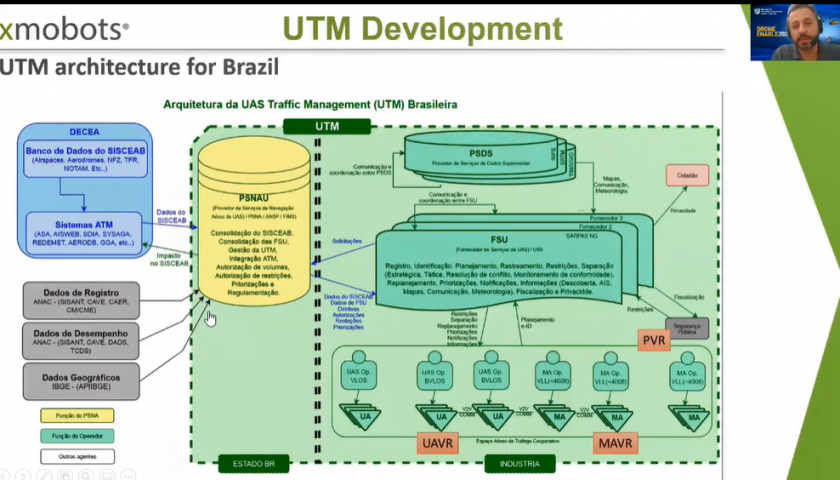By Jenny Beechener
Brazil is blazing a trail in drone use, using unmanned vehicles in agriculture, food delivery, search and rescue and inspection. There are 80,000 drones flying legally today of which 35,000 conduct commercial operations said Roberto J S Honorato, Head of Airworthiness with the Brazilian regulator ANAC on day 5 of ICAO Drone Enable 2021. Visual line of sight (VLOS) flight authorisations below 400ft are accessed free, in real-time, using the regulator’s SISANT registration portal. The government is designing a framework to enable beyond visual line of sight (BVLOS) operations at scale as part of a wider Unmanned Traffic Management (UTM) concept.
BVLOS operations are authorised on a case-by-case basis, with approximately 60 unmanned aircraft approved for regular BVLOS operations according to Ailton José de Oliveira Jr, ANAC’s Coordinator Drones and New Technologies Group. Applications to fly BVLOS are made using DECEA’s SARPAS platform which sets strict limits around airfields, critical infrastructure and over people. “Under ANAC’s regulatory agenda, the first work stream enabled VLOS from 2018 and BVLOS by authorisation from 2020. A second work stream during 2021/22 is focused on simplifying drone registration and a third work stream is developing technical criteria for new the operational environment to support UTM.”
Jorge Alexandre de Almeida Regis, DECEA Head of military Op Subdivision said SARPAS has received 500,000 access requests since the concept was introduced in 2016. “The next step is phased development of the SARPAS front end. The main goal is the safety of all airspace users.” DECEA proposes a set of four levels of service to encompass controlled and uncontrolled airspace. “Tests will include simulated flight tests with participation from all stakeholders to demonstrate interoperability with ATM.”
While the Brazilian landscape is uniquely suited to drone use, it also faces challenges. It is the fifth country worldwide in terms of helicopter usage, sharing the same low-level airspace as drones, and internet access is limited. “Aircraft deconfliction capabilities are important,” said Lucas Florêncio Queiróz de Oliveira, Co-Founder, AL Drones. “Regulation needs to be technology-agnostic to enable different solutions.” He believes by establishing test zones, UTM concepts can be trialled and integrated in a step-by-step approach.
For more information visit:
https://www.icao.int/Meetings/DRONEENABLE4/Documents/Drone2021_VirtualEventDirectory.pdf




